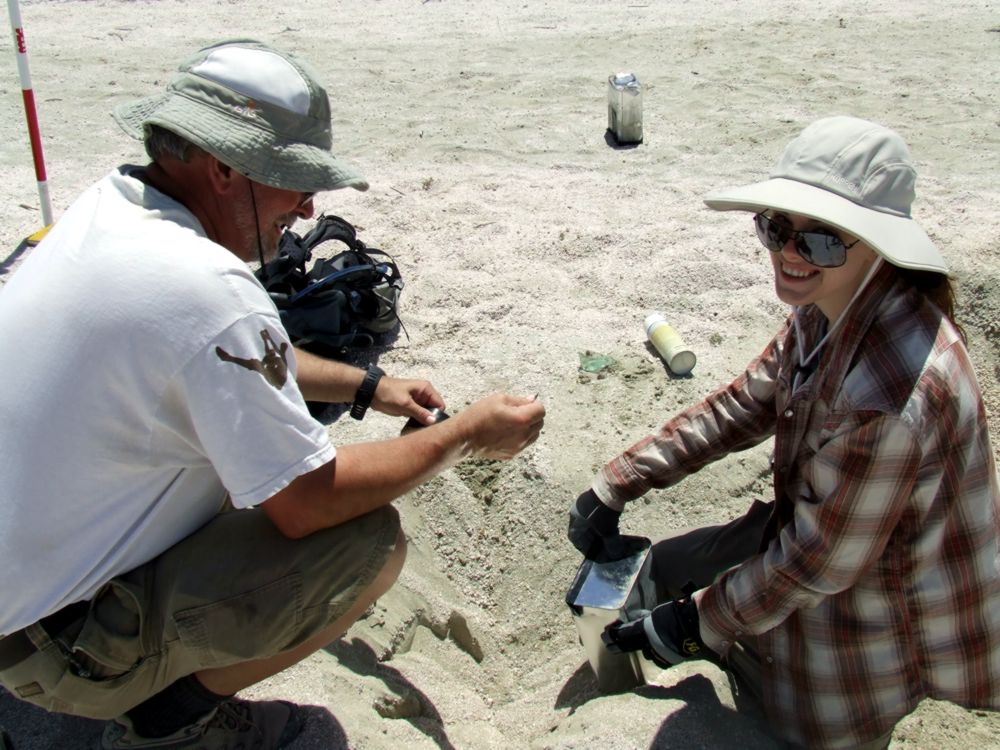
 An actualistic approach to the
semi-quantitative scale for the taphonomy of fish disarticulation
based on the observations from the Salton Sea shoreline,
California, USA
An actualistic approach to the
semi-quantitative scale for the taphonomy of fish disarticulation
based on the observations from the Salton Sea shoreline,
California, USA 
 An actualistic approach to the
semi-quantitative scale for the taphonomy of fish disarticulation
based on the observations from the Salton Sea shoreline,
California, USA
An actualistic approach to the
semi-quantitative scale for the taphonomy of fish disarticulation
based on the observations from the Salton Sea shoreline,
California, USA Heness, Elizabeth A., Wilk, Jewels, Malenda, H. Fitzgerald, Simpson, Edward L., and Kraal, Erin, 2012, An actualistic approach to the semi-quantitative scale for the taphonomy of fish disarticulation based on the observations from the Salton Sea shoreline, California, USA: Geological Society of America – Northeast Section Meeting in Hartford, CT (18–20 March 2012), Vol. 44, No. 2, p. 64.
 During a catastrophic
breach in the Imperial Irrigation Canal (1905 – 07), the Salton sink
was partially flooded with water from the Colorado River. Since the
initial flooding event, the ecosystem has evolved under conditions
of increasing salinity and eutrophication. High-wind events subject
the lake to: 1) overturning of the chemically stratified water
column, 2) generation of algal blooms reducing dissolved oxygen, and
3) high mortality events in the hybrid tilapia (Oreochromis
mossambicus x O. uroepis) due to phosphates and sulfides
stirred up from bottom sediments. We developed a semi-quantitative
fish articulation scale to understand and report on the shoreline
taphonomy of these fish kills in the Salton Sea and extend our
findings to interpret shoreline fish kills preserved in the rock
record of the Triassic Newark basin.
During a catastrophic
breach in the Imperial Irrigation Canal (1905 – 07), the Salton sink
was partially flooded with water from the Colorado River. Since the
initial flooding event, the ecosystem has evolved under conditions
of increasing salinity and eutrophication. High-wind events subject
the lake to: 1) overturning of the chemically stratified water
column, 2) generation of algal blooms reducing dissolved oxygen, and
3) high mortality events in the hybrid tilapia (Oreochromis
mossambicus x O. uroepis) due to phosphates and sulfides
stirred up from bottom sediments. We developed a semi-quantitative
fish articulation scale to understand and report on the shoreline
taphonomy of these fish kills in the Salton Sea and extend our
findings to interpret shoreline fish kills preserved in the rock
record of the Triassic Newark basin.